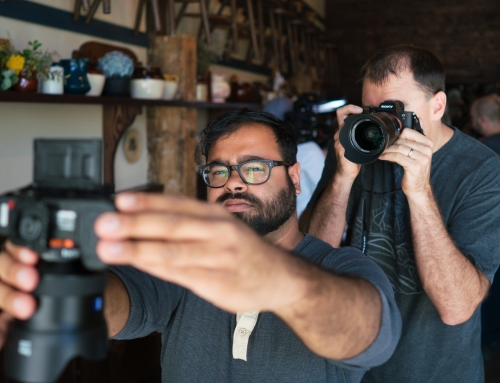I may be one of the last people on the planet to hear about this experiment, but just in case I’m not, read on.
Dr. Sugata Mitra conducted an experiment in 1999 in which he placed a computer connected to the Internet in a slum wall in New Delhi.
He allowed children to use this computer in an unsupervised way. Lo and behold, they quickly taught themselves to surf the web and to use applications–on a Windows machine, no less. :-)
Here is the project’s website (thank you, Deepak Shenoy). Here is a PBS video, photo gallery, and interview of Dr. Mitra.
Fascinating stuff. Thanks to Peter Gregory for bringing it to my attention.








Thats a great post!!! Nice and unique experiment there. Also btw, I enjoyed your comments about India trip and for each photos. (I am Indian). And yes, that photo is indeed a police station.
Yes, NIIT’s experiment proved that literacy and computer literacy need not have a direct correlation.
As more and more video and audio become available, connecting will not be only for the people who can read and type.
By the way, have you heard of this, Guy?
http://www.inblogs.net/googleblog/2005/12/same-language-subtitling.html
I wonder what the default homepage was for this computer and how this might have affected the user’s ability to learn?
Was it a traditional web portal? The google homepage? A static site welcoming them to the hole-in-the-wall experiment?
My guess is that their intial online experience, maybe even for a few months, would be characterised by what this default page was.
Great stuff! Btw, the web site for the experiment is:
http://www.hole-in-the-wall.com/
Just think how fast the kids could have picked it up had they used . . . . oh I don’t know . . . maybe a Mac?
I started a software company 2 years ago and I live by rules for the revolutionary. You are an incredible person, humble and honest. I wish i could run into more people like you in the business world. Thank you guy…
Guy;
As always, a great post. Makes you wonder how the experiment would have been different if it had been in inner-city America instead. No way that cpu would last two years. :-) I also found the info regarding his experiements in the Kashmir region fascinating.
Not surprising. Personal experience validates the hole-in-the-wall experiment. Kids are naturally curious and innate learners. It also gives them a tool to explore a larger world, whether they realize thats what they’re doing or not. Our 4 year old picked up basic web surfing immediately. A few months later he wandered into the kitchen and asked Mom if he could borrow her credit card to use on the computer – yikes! And yes, we keep his computer in the family room. (BTW – good eats you brought to the picnic Sunday!)
Great!Very useful for me.
Thanks for all the great publications!
This experiment made sense in India, where there is prestige in software development. I would be surprised if there were a single village that has not been touched by the millions of people who have become software engineers either through increased access to education or the ability to travel abroad and bring information back home.
Even though the kids may not have owned a computer, I suspect they had been exposed to the _concept_ of these machines.
If this experiment were run in a typical US inner-city, I suspect the response would have been trying to figure out a way to get the computer home. My suspicion is not because I think kids are natural thieves, but because they understand the problem of scarcity better than the concept of community ownership.
In other words, they would _know_ that the machines had, or could be converted into something of, personal value. It’s the difference between appreciating a thing for what it is (newness) and appreciating a thing for what it can do for you (monetization).
I also wonder [kids being kids] if one group of kids monopolized the new toy or whether it was truly open for all to use after the initial contact.
Mullen, I would think you’d be surprised that here “might” somehow gives way; some of the bigger and older kids will have slower intuitive learning ability than some of the smaller kids and you’ll probably see that they let the smaller (or younger) kids teach them the ropes.
Is Hole in the Wall the indian way to say Windows ?
In french Mac is the way to say pimp ! :D
Ok, I leave. ->[]
Great stuff! Especially if you link this experiment with Negroponte’s $100-Laptop project, which is based on Alan Kay’s vision that each child should own its own laptop. More see laptop.org